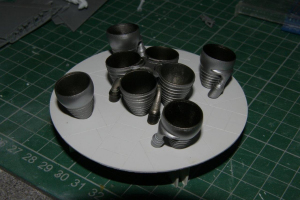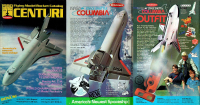J-2 Update (1:72 & 1:70)
The latest design for the J-2 Engines in 1:72 and 1:70 scale is identical to the original, but the 3D model is now printed in two pieces for easier finishing. Note the addition of sprue material that will have to be removed for assembly. (Lower sprue is only partially removed to preserve studs for attachment. … Continue Reading ››


